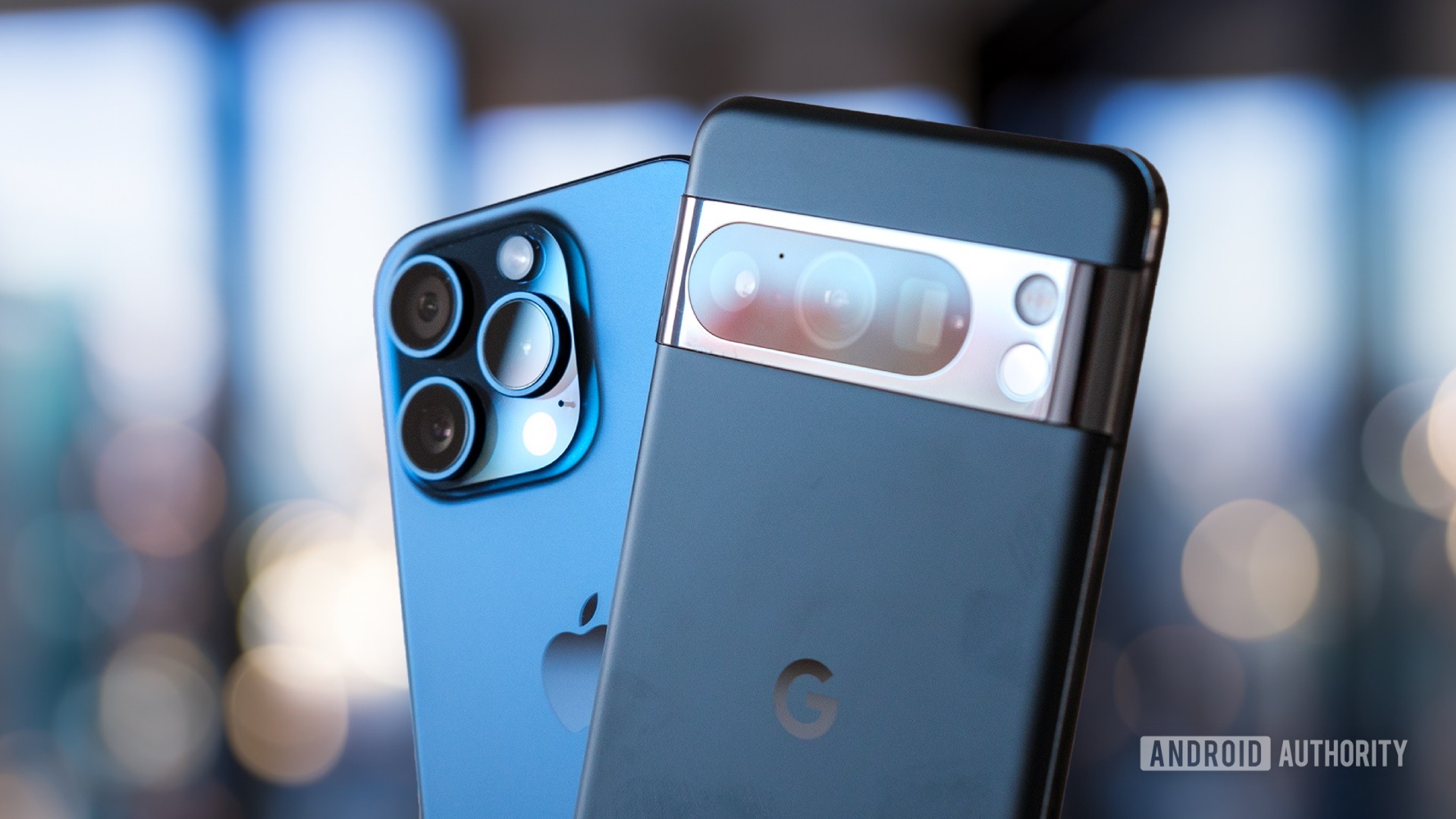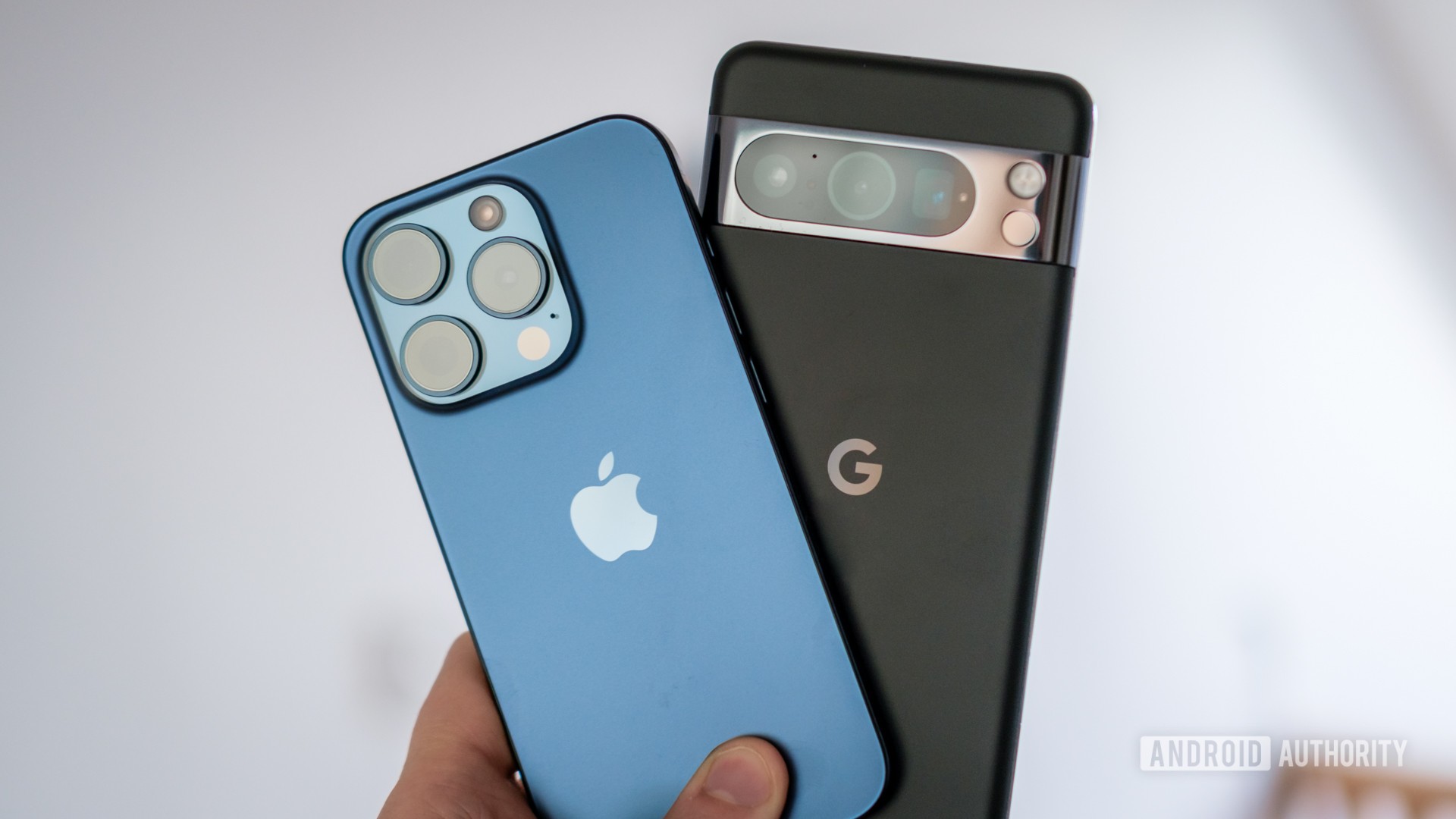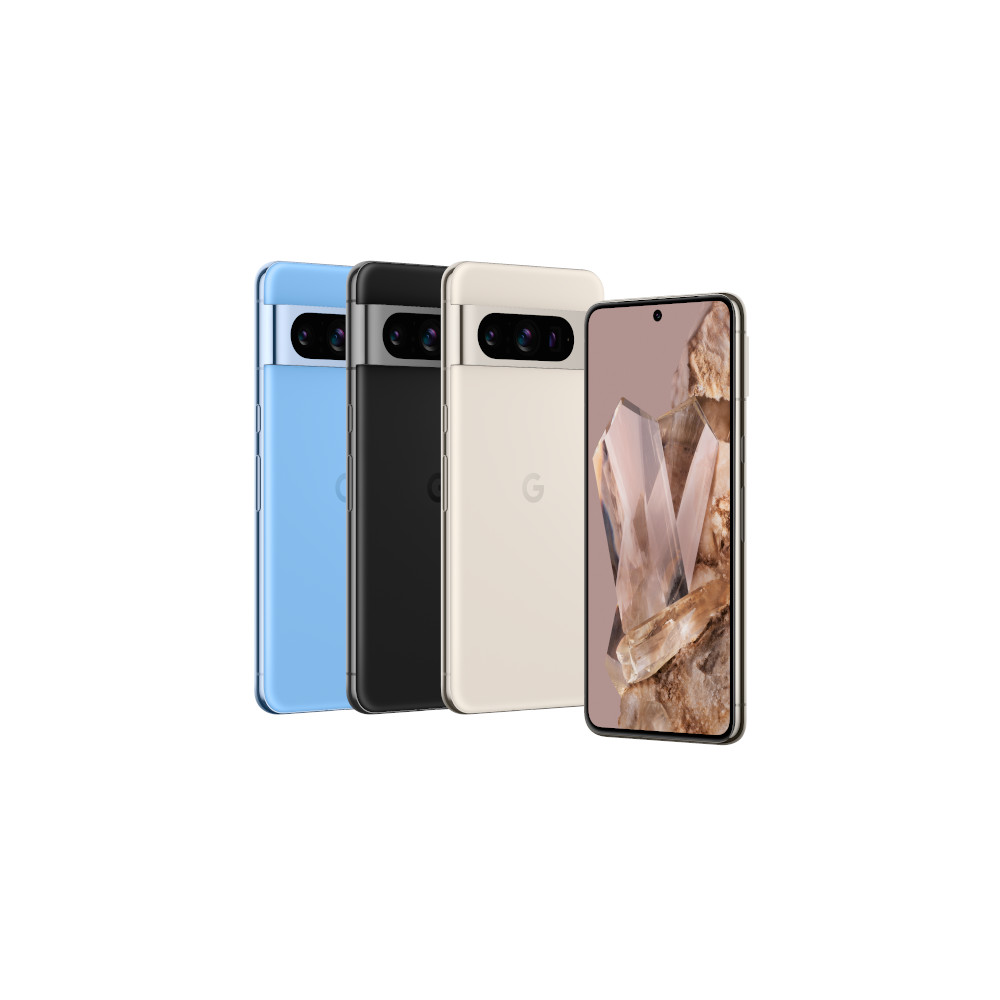Pixel 8 Pro vs iPhone 15 Pro camera shootout: Which is the best ‘Pro’ on the market?

Robert Triggs / Android Authority
Apple and Google are two brands that pride themself on best-in-class camera phones. They’ve built reputations on it and continue to play to this strength with the latest iPhone 15 Pro and Pixel 8 Pro. This begs the question: if you have $999 to spend on your next smartphone upgrade, what should an avid photographer buy?
Yes, but it depends on the situation. Here’s the TLDR from our article:
- The two phones have great primary cameras. The Pixel 8 Pro looks more muted and realistic, while Apple targets more contrast and color pop.
- The iPhone 15 Pro still has issues with yellow tints and occasional under-exposure.
- Google’s ultrawide camera fits more in, but Apple’s camera suffers from fewer lens distortion issues.
- Google’s Pixel 8 Pro takes better-looking pictures when using long-range zoom.
- Both phones take excellent selfies, but the iPhone 15 Pro is more consistent in tricky lighting.
- Overall, the Google Pixel 8 Pro is the most consistent camera across a wider range of scenarios, but the Apple iPhone 15 Pro still takes scintillating pictures most of the time.
Pixel 8 Pro vs iPhone 15 Pro camera specs
Before the pictures, a quick recap of what the Pixel 8 Pro and iPhone 15 Pro offer in their rear camera arrays. Both pack a high-resolution primary sensor, an ultrawide lens to fit more in, and a telephoto camera for longer-range snaps. It’s a tried and tested formula that offers plenty of versatility across shooting situations. However, peer into the specifics and there are some key differences worth highlighting.
First, the Pixel 8 Pro uses high-resolution sensors with pixel binning throughout its rear array. This isn’t so important from a detail perspective (though the larger sensor does collect more light); the camera shoots at 12MP unless forced otherwise. However, it does allow Google to crop from the sensor for “lossless” 2x and 5x zoom, albeit without the corresponding change in focal length.
The iPhone 15 Pro does something a little different with its primary sensor, combining detail from the 48MP raw resolution and 12MP binning resolution to output 24MP snaps. This also helps Apple capture more detail at increments up to 2x.
| Google Pixel 8 Pro | Apple iPhone 15 Pro | |
|---|---|---|
|
Primary camera |
Google Pixel 8 Pro
50MP resolution (12.5MP binned) |
Apple iPhone 15 Pro
48MP resolution (12MP binned, 24MP output) |
|
Ultrawide camera |
Google Pixel 8 Pro
48MP resolution (12MP binned)
ƒ/1.95 aperture 12mm focal length |
Apple iPhone 15 Pro
12MP resolution |
|
Telephoto camera |
Google Pixel 8 Pro
48MP resolution (12MP binned) |
Apple iPhone 15 Pro
12MP resolution |
|
Selfie camera |
Google Pixel 8 Pro
10.5MP resolution |
Apple iPhone 15 Pro
12MP resolution |
On the ultrawide side, Google has a marginally wider field of view to fit more in. However, keeping distortion under control will be important to ensure that images look detailed and hold up well in dimmer lighting.
Zoom is where we see the most significant discrepancy in hardware. The Pixel 8 Pro has a much larger sensor, wider aperture, and longer focal length (for 5x zoom), making it undoubtedly the long-range winner. The iPhone 15 Pro doesn’t have Apple’s fancy new 5x periscope camera; that’s reserved for the Pro Max. However, the 77mm focal length can just about double up for portraits and may look better than Google’s implementation at medium range.
But enough with the on-paper differences, let’s find out which is actually better.
Pixel 8 Pro vs iPhone 15 Pro camera shootout
If you want to follow along with your own close analysis, you can find the full-res image samples in this Google Drive folder.
Primary camera capabilities
Right out of the gate, there are clear and obvious differences not in the quality but in the artistic look of the photos from these two phones. We’re using Apple’s Standard color profile, but even this targets a quite heavy color saturation and a high contrast level to boost whites and shadows for more pop.
Google’s color palette is more muted and realistic by comparison. The Pixel 8 Pro’s images certainly don’t jump out at you, but it’s more true to life and leaves plenty of headroom to apply your edits, if you’re inclined.
Apple’s familiar yellow tint and cooler blues remain, while Google’s white balance is still on the warmer side, as has been the case in previous years. While the two are pretty consistent in presentation, you’ll occasionally spot underexposed shots from the iPhone 15 Pro. This isn’t a problem with Apple’s HDR technology, though it’s still not the most consistent. Rather it’s at least partly down to its higher contrast approach to processing, which can push already dark elements of the scene further into the shadows. This is most noticeable in landscape shots. Still, Apple’s long-exposure and multi-frame technology is a boon for low light, which ends up with superior colors and fewer artifacts than Google’s Night Sight, which is still very robust.
While we’re looking at the main cameras, let’s take a quick look at fine detail. We’ll take a 100% crop from the iPhone 15 Pro’s 24MP and 48MP outputs and stack them up against the Pixel 8 Pro’s 12MP and 50MP options.
Even with solid lighting, the default snaps from the Pixel 8 Pro and iPhone 15 Pro aren’t entirely clean. You can spot a fair amount of sharpening and AI artifacts in the Pixel’s image, while the iPhone’s 24MP snap is noisy. It’s challenging to read the text in either, and both are generally a little too noisy to maximize their resolution claims in many pics I took.
Apple’s 48MP is more detailed, but there’s a heavy dose of sharpening and image cleanup that is a little hard on the eye. The Pixel 8 Pro’s 50MP image is the least processed looking while still preserving a high level of detail. However, these high-resolution modes only hold up well in bright lighting. Dim conditions produce a smudgy mess that’s worse than the 12MP image, hence why Apple and Google lock these options behind their pro mode toggles.
Returning to HDR, this is an area where Google has historically held a solid lead but there’s not a lot between the two when shooting in most scenarios. The two are mostly very good at balancing foreground and background exposure. However, push the phones into really tough environments with strong backlighting, and there are key differences.
In tough HDR environments, the Pixel 8 Pro is generally better at ensuring correct foreground exposure while still balancing the background. The iPhone 15 Pro is keener to avoid highlight clipping, even at the expense of subject exposure. However, flip on the portrait mode and the iPhone 15 Pro goes to lengths to ensure correct subject exposure in tricky environments. Details are noisy, but Apple’s better exposure and white balance make this the better shot of the two.
Speaking of portraits, Apple’s brighter exposure is highly desirable, but the consistent yellow tint is a detriment to realistic skin tones. Google’s approach can be too warm, particularly outdoors, but performs better in more neutral lighting. Both phones offer similar quality artificial bokeh, but I’d give the iPhone 15 Pro the nudge for smoother edge detection and more realistic soft roll-off.
Neither phone is particularly brilliant when it comes to skin textures. Google’s approach remains too oversharp, highlighting unwanted blemishes and imperfections. My pores aren’t that bad, I swear! Apple’s results are smoother, but this is mostly a result of noise, meaning you lose some fine details you may want to preserve, such as hair textures.
While both phones are capable of taking great-looking pictures with their primary lens, the Pixel 8 Pro is the more consistent shooter. It’s not always perfect, but you know what you’re going to get 99% of the time. Between oversaturation, underexposure, and yellow tints, Apple’s iPhone 15 Pro is more of a mixed bag.
Fitting more in with ultrawide
You’ll find the same color pallets on offer in the ultrawide department — the Pixel 8 Pro offers more balanced saturation but a warmer white balance, and the iPhone 15 Pro is cooler but occasionally looks too yellow. Both do a mostly decent job at matching the profile of the primary lens. However, the smaller sensor on the iPhone 15 Pro exacerbates the odd HDR issue, leading to plenty of areas of underexposure when shooting with the ultrawide.
As discussed in the initial section, the Pixel 8 Pro’s ultrawide provides a slightly wider field of view to squeeze more in, but both are sufficiently wide to fit plenty into the scene. Image clarity is more important with these extreme lenses, and both are so-so in that regard. The two suffer from a lack of detail and smudging at the frame’s edges, though I would say that the iPhone is a smidgen noisier. However, the Pixel’s wider lens suffers from more chromatic aberration when shooting into bright light. That’s just the trade-off for the extra FoV. Neither ultrawide lens offers much in the way of fine details; there’s a heavy reliance on denoise and sharpening to clean up the pictures.
I can’t say I’m super impressed by either of these ultrawide lenses. They’re fine as far as smartphones go, but between the additional distortion, lack of detail, and iffy color balance, I wouldn’t want to take many pictures with either. Then again, I’m in the camp that finds focal lengths wider than about 20mm pretty unnatural looking anyway.
Zooming in
Starting at 2x zoom, both the Pixel 8 Pro and iPhone 15 Pro employ a crop from their high-resolution sensors for a “lossless” zoom versus traditional digital upscaling. The results are generally pretty good, at least in good lighting, but the small pixels result in some noise and loss of detail. Google attempts to sharpen this up, while Apple is happy with a slightly softer look. You’re much more likely to see the aforementioned color difference than detail discrepancies.
At 3x, we assumed that Apple’s optical zoom would win out over Google’s image-blending approach, but this isn’t the case. The Pixel 8 Pro hands in just as much detail as the iPhone 15 Pro’s small 3x telephoto lens and actually wins out with lower noise and better dynamic range in trickier lighting conditions. That is quite an achievement, as the iPhone 3x zoom snaps look good in all but the dimmerest light.
As such, the iPhone 15 Pro’s zoom setup is passable at 5x, thanks to decent upscaling algorithms. Still, you can see an increasing lack of detail, even in good lighting. At 10x, the lens is a no-go. The Pixel 8 Pro is a clear winner at longer ranges. Its 5x optical resolution is super sharp, and cropping from the large image sensor holds up incredibly well at 10x, producing solid dynamic range even in less-than-ideal conditions, even if the details are a little soft.
While the previous two sections may have been a tossup in some regards, zoom is a slam dunk win for the Google Pixel 8 Pro.
Let’s not forget selfies
Selfies are perhaps the closest run contest between these two heavyweights, and both are very good. Details are slightly oversharp if you peep very close, even in bright light, but we’re looking at comparable skin tones and textures. Just like portrait mode, the iPhone 15 Pro’s brighter subject exposure works well and ensures a robust picture across a variety of lighting conditions. Google’s higher contrast look can result in underexposure and overly dark features when shooting against brighter backgrounds.
Both phones lose sharpness in lower light, though that’s to be expected from these smaller sensors. The iPhone 15 Pro’s color and saturation hold up quite well, while our Pixel 8 Pro snaps look a little washed out in the dark. Still, it’s hard to complain too much about either set of selfies here, they’re both two fo the best in the business.
Pixel 8 Pro vs iPhone 15 Pro camera: Which is the best?

Robert Triggs / Android Authority
There’s no denying that these two phones take great-looking snaps, but we are here to pick the very best, and there’s daylight enough between the two to place one above the other. When looking for consistency and quality over a range of shooting environments, the Pixel 8 Pro comes out on top. Neither phone is flawless, but Apple refuses to fix complaints we’ve had for generations, allowing the competition to leap past.
Not to mention that, with a new selection of manual shooting controls, the Pixel 8 Pro goes above Apple’s high-end offering in terms of making each shot your own. At least without resorting to RAW and an evening editing session. Priced $100 less than the iPhone 15 Pro as well, the Google Pixel 8 Pro should be the keen photographers’ preferred pick. That said, videographers may feel a little differently, but that’s another article.
Of course, there’s much more to these two phones than just their camera packages. Google’s Pixel 8 Pro doubles down on unique AI features you won’t find elsewhere, while the Apple iPhone 15 Pro continues to lead the field for outright performance. Check out our closer look at the Pixel 8 Pro vs iPhone 15 Pro if you still can’t decide between the two.

Google Pixel 8 Pro
Excellent cameras
Fun, exclusive Android 14 customizations
Industry-leading update promise
For all the latest Technology News Click Here
For the latest news and updates, follow us on Google News.

